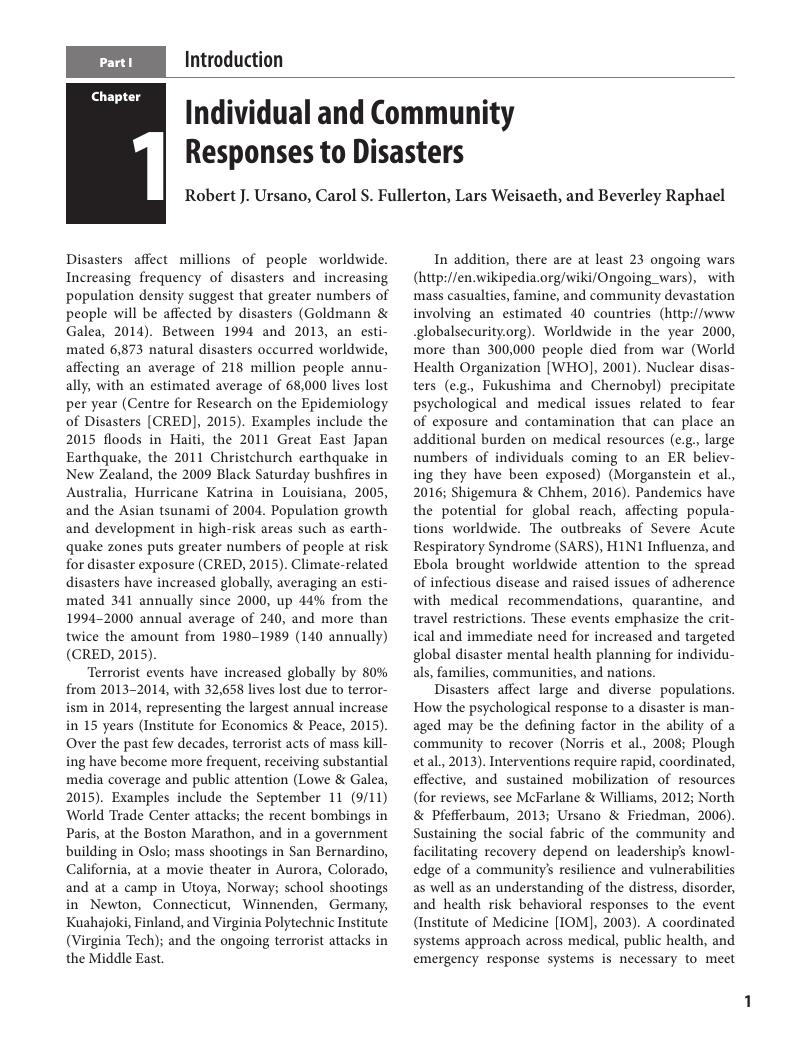Book contents
- Textbook of Disaster PsychiatrySecond Edition
- Additional material
- Textbook of Disaster Psychiatry
- Copyright page
- Contents
- Contributors
- Preface
- Part I Introduction
- 1 Individual and Community Responses to Disasters
- Part II Foundations of Disaster Psychiatry
- Part III Clinical Care and Interventions
- Part IV Special Topics
- Part V Public Health and Disaster Psychiatry
- Index
- References
1 - Individual and Community Responses to Disasters
from Part I - Introduction
Published online by Cambridge University Press: 02 June 2017
- Textbook of Disaster PsychiatrySecond Edition
- Additional material
- Textbook of Disaster Psychiatry
- Copyright page
- Contents
- Contributors
- Preface
- Part I Introduction
- 1 Individual and Community Responses to Disasters
- Part II Foundations of Disaster Psychiatry
- Part III Clinical Care and Interventions
- Part IV Special Topics
- Part V Public Health and Disaster Psychiatry
- Index
- References
Summary

- Type
- Chapter
- Information
- Textbook of Disaster Psychiatry , pp. 1 - 26Publisher: Cambridge University PressPrint publication year: 2017
References
- 3
- Cited by



